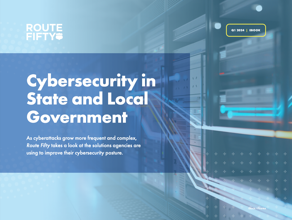Local Officials Say They Need More Time to Spend CARES Act Money, as Future Aid Remains in Doubt

A worker with a forklift picks up a pallet of protective gear in Phoenix in early September, 2020. Personal protective equipment is one cost localities have been covering with federal aid. AP Photo/Ross D. Franklin
Connecting state and local government leaders
State and local governments are up against a Dec. 30 deadline to use the coronavirus relief money, a timeframe that many local officials say should be extended.
Local officials say a looming end-of-year deadline for their governments to use hundreds of millions of dollars in federal coronavirus aid could force them to unnecessarily rush spending over the coming three months and will limit them from spreading the money into next year when the virus is likely to still be a threat.
It would be immensely helpful, they say, if the federal government pushed the cutoff date to use the money from Dec. 30, out into 2021.
“One of the best things the federal government could do for us, in Hamilton County, would be to extend the time that we can use our current allocation so that we can make sure these dollars get to where they’re needed,” said Jeff Aluotto, the county administrator in Hamilton County, Ohio, home to Cincinnati, and a recipient of about $142 million of the federal relief funds.
City and county officials in places that received the direct federal aid say that the money has been crucial for covering public health costs and extending a financial lifeline to struggling businesses and residents at a time when government budgets are otherwise crunched. But along with getting more time to dole out relief dollars, some officials say they could still use additional flexibility to cover costs not currently allowed by the program.
The money is coming from the Coronavirus Relief Fund, which was created under a law President Trump signed in March known as the CARES Act. The fund included $139 billion in aid to states, as well as localities with over 500,000 residents.
“We could not have responded to the pandemic without this money,” said Maricopa County, Arizona assistant county manager Lee Ann Bohn. With about 4 million residents and a roughly $2.5 billion budget in recent years, the county received $398 million. That money was channeled into a variety of programs, including coronavirus testing, small business assistance and aid to renters at risk of eviction.
Bohn also said moving the deadline, at least until next June 30, would be a huge help. “Covid does not end on December 30, but our CARES Act money does,” she said.
There are also questions about how to keep the programs that the relief money is now paying for afloat if the current slug of aid money runs out and is not replenished. This point has been hammered repeatedly by associations representing state and local governments, lobbying Congress to come up with more aid. But Democrats and Republicans have so far failed to agree on a deal to provide another round of federal support to states and localities. Republicans in the Senate have been generally unsupportive of the idea.
“We really haven’t figured out what happens after December 30 in terms of our economic recovery support that we’re providing, some of the food assistance, some of the housing assistance that we're providing through the CRF-funded programs,” said Margaret Danuser, Denver’s deputy chief financial officer.
Danuser noted that the economic slowdown and the fact that people are going out and traveling less as they try to avoid the virus, is hurting Denver’s budget. “We rely significantly on sales and use tax and lodgers tax and that came to a screeching halt,” she said. This means there’s not a ton of extra cash available to spend on the programs that the relief funding has gone to.
“We are trying to shove a lot through the pipeline right now,” Danuser said. “A little bit more breathing room in terms of the timeframe to spend the dollars, as well as maybe some additional flexibility around the use of the funds, would be certainly very helpful.”
Some officials also make a case—one made repeatedly by state and local government advocates in past months—that the relief funds would be more useful if they could be used to backfill parts of budgets that are getting eroded by the virus-driven economic downturn, but are not necessarily tied directly to the pandemic response.
Jefferson County, Alabama is planning to funnel about $27 million of the $114 million in aid it received to 35 cities within its borders. County manager Tony Petelos said the county and cities would benefit from being able to use at least some of the federal money to shore up their budgets as tax revenues fall short of earlier expectations.
He endorsed a proposal that Republicans in the U.S. Senate have put forward that would allow a portion of the relief funds local governments received to be used this way.
“If they did that one item, that would be a monumental help,” Petelos said.
A bill House Democrats passed takes an even more permissive approach than the GOP plan, adding the replacement of “lost, delayed, or decreased” revenue, stemming from the coronavirus outbreak, as an eligible use for the relief fund dollars. It would also provide $875 billion in new direct aid to state and local governments. The Senate Republicans’ package does not include any additional money.
So far, Petelos estimated that the county and its cities have both drawn down about half of the CARES Act relief fund money that they had at their disposal, meaning somewhere in the ballpark of $57 million dollars is still available in Jefferson County.
“I think at the rate that the cities are drawing down their funds from us, they will not be able to spend the money the way the rules are written today,” he added.
Eryn Hurley, an associate legislative director with the National Association of Counties, said that the “main sticking point for us, or the flaw” with the relief fund is that the money can’t be used to replace lost revenues, but instead must be spent on areas linked to the virus. “Counties are going to lose a significant amount of revenue over the next year and beyond,” she said.
As far as the Dec. 30 deadline, Hurley said there are outstanding questions about what stage spending needs to be in by that date to qualify for the relief program. For instance, if a funded project isn’t finished, or if there’s a delay with the contracting or procurement process, will the cost still be eligible?
Guidance the Treasury Department’s Office of Inspector General issued this week did help clarify how much leeway state and local governments have to use the relief money for public health and public safety employee payroll costs. There had been some confusion on this.
In late August, the inspector general’s office issued a document suggesting that it would take a fairly stringent approach when it comes to record-keeping and evaluating whether these costs are substantially linked to the virus response and therefore eligible for reimbursement.
The updated guidance offers more flexibility and is more closely aligned with earlier guidelines that Treasury’s policy team issued, Hurley explained. This means cities and counties that received the funds should be able to move ahead more confidently putting the money towards these payroll expenses without worrying about getting into trouble later with federal auditors.
“It’s been a rocky road to figure out what we’re able to do,” said Rory Regan, a budget analyst with Denver’s Budget and Management Office. “We don’t want to run the risk of down the line being found to have run afoul of the guidance.” He said the city is still ironing out the final details of how it will approach covering payroll costs with the money.
Denver received around $126 million from the Coronavirus Relief Fund. A breakdown Danuser provided this week shows that, as of Sept. 12, $85 million had been earmarked for expenses and $41 million was set aside in a reserve, in case of a surge in the virus or other needs.
Of the total allocated sum, $40 million was budgeted for “citywide services,” which includes costs like eligible payroll, work-from-home technology for city workers, touchless fixtures in libraries, and the city’s local match for funding from the Federal Emergency Management Agency.
Nearly $15 million was slated for economic recovery programs, like aid to small businesses and nonprofits. Close to $12 million was budgeted for hotel rooms and other facilities to provide emergency shelter for people who need it. About $7.5 million is targeted to public health costs, like virus testing and protective gear. Another $6.5 million is lined up for other housing support.
To divvy up a portion of the CARES Act aid it received, Denver had city agencies draft proposals for how they wanted to use the money. Regan said that the agencies submitted around 50 to 60 of the proposals. “We looked through them and tried to develop a plan that met a lot of different types of community needs,” he said. “We had far more need than we had capacity to fund.”
Maricopa County has decided to dedicate $230 million to health and emergency response costs, like testing for the virus and the flu ($50 million), contact tracing and case investigation ($25 million) and protective gear ($25 million), according to an outline of the county’s CARES Act budget through Sept. 16. Bohn noted that the county has added over 100 staff to public health offices since the virus struck.
Another $47.5 million in Maricopa County is set to go toward making government services and workplaces safer amid the virus outbreak—for example $7 million to expand online services and $6 million to help enable county employees to work remotely. Homelessness response, eviction prevention and rental assistance programs are in line to receive a combined $48 million.
The county also directed about $63 million of the money to small business relief, opening the door for businesses and nonprofits faced with financial hardship due to the pandemic to apply for grants up to $25,000. Bohn noted that the county has typically not had a strong economic development arm, and that it was a sharp learning curve to get this initiative setup.
In Ohio’s Hamilton County, Aluotto described using the funding in similar ways.
The county, as of earlier this week, had provided upwards 400 people with rent and utility assistance, he said. “We’ve just got so much demand there,” he said, noting that many more residents need help. “We’re going to have a lot more there by the time this is done.”
Meanwhile, he said between 600 and 800 small businesses in the county will have received some sort of financial aid by the time the CARES Act money is spent.
The county has also been looking to use some of the money to promote its local tourism and convention industry, which Aluotto said has been decimated by the virus. Treasury guidance, he said, now seems to indicate that this is possible, as long as marketing focuses on how visiting the county would be safe when it comes to virus risks.
“There is an impetus to want to tie everything we do directly to Covid-19,” Aluotto said. “But I think this challenge has expanded so far beyond that, that I think if we could get some additional flexibility in terms of how we spend the dollars, that would certainly be helpful.”
Another issue Hurley highlighted is that smaller local governments that did not receive direct CARES Act payments from the federal government have to rely on their states to pass through the aid and, she said, some of those localities still haven’t seen any of the money.
She also emphasized that, just because there are counties that haven’t burned through all of the coronavirus aid yet, it doesn’t mean that they won’t need more federal assistance in the year ahead. “Counties are expecting to run out of these funds,” she said.
Bill Lucia is a senior reporter for Route Fifty and is based in Olympia, Washington.

NEXT STORY: Pandemic’s Uncertainties Hang Heavy Over Small City's Budget



